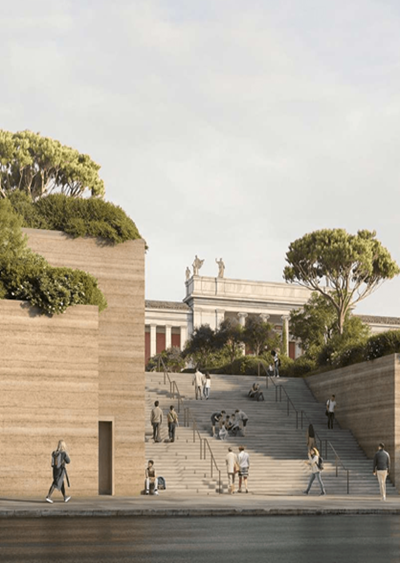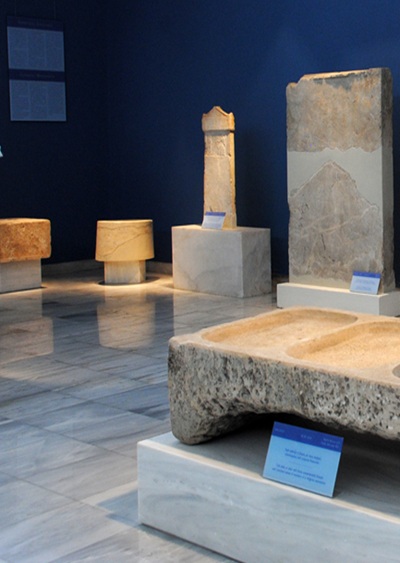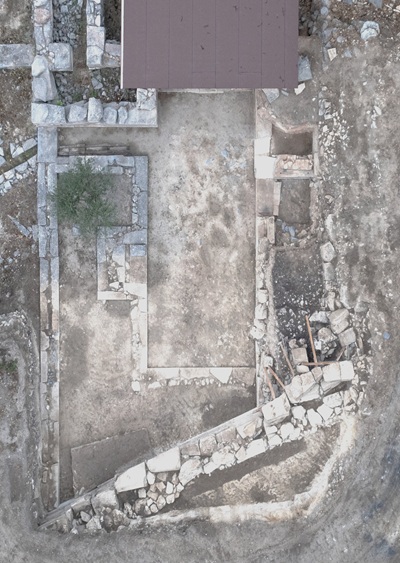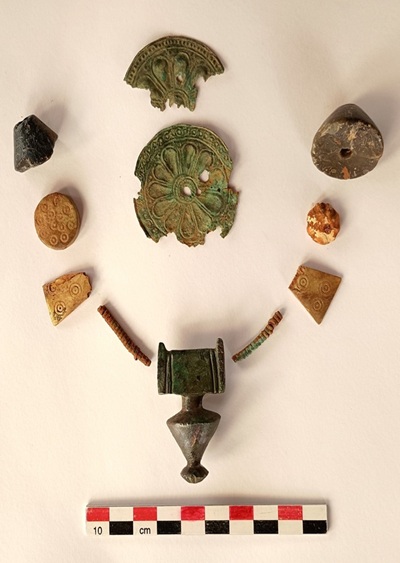
The dragon houses of Evia, made of square stone blocks without any binding material, structures that were used as shepherd’s huts in late antiquity, seem to have served other functions for more than two millennia. The monumental size of the building stones and the elaborately constructed roof, according to the euphoric system, led the local inhabitants to believe that they were built by ‘dragons’, i.e. anthropomorphic giants with supernatural powers. The buildings, located in the mountains of the southern part of Evia, have not yet revealed all their secrets and archaeological research is trying to solve the mystery of their primary use: small sanctuary, quarrymen’s shelter, or outpost?
Among the hills, in the southern part of the island, a stone complex of buildings dominates, which stands out for the monumental size of its building stones and its euphoric roof. It consists of three buildings, measuring 12.40m x 6.20m, the northern and the southern one, while the eastern one is longer, 6.20m x 5.80m. The complex at Pallis-Laka is one of a total of seven ‘dragon houses’ that survive on the slopes of the mountains, which researchers are trying to date, to clarify the identity of their builders and to reveal the mystery of their use and functions.
A Greek-Swiss team, led by Dr Angeliki G. Simossi (Ephorate of Antiquities of Evia) and Professor Karl Reber (Swiss School of Archaeology in Greece), carried out investigations at the dragon house at Pallis-Lakka, south of Styra. The aim of the research was to clarify the floor plan and the method of construction, but, above all, to collect ceramic fragments that will lead to a more accurate dating. This year, thanks to the findings of the excavation, the archaeologists were able to confirm that the monument of Pallis-Lakka was built in antiquity. Despite the progress made in dating the dragon houses, their function is still unclear.
The discovery of a ‘wall’, about 1m wide, next to the complex offers new evidence in this direction, although its use is still unknown (anadir?) and belongs to a second building phase.
To date, seven structures have been identified in the area of the Styrae that exhibit the characteristics of dragon houses. In parallel with the work carried out at Pallis-Lakka, archaeologists have begun to document the other dragon houses at the sites of Lumithel, Croix-Focht, Ilkieses and Makko. Thanks to topographic and photogrammetric mapping, archaeologists now have 3D models of these houses, which greatly facilitates their study. Finally, the work of the Greek-Swiss team also aims to highlight these monuments, which are among the most visited in the region, providing information to Greek and foreign visitors.
The archaeologists of the Swiss School of Archaeology, Chloé Chezeaux, Jérôme André, Nina Nicole and Tristan Allegro, participated in the research team, while on the part of EFA Evia the scientific responsibility on the spot is the department head Fani Stavroulaki.







Leave A Comment